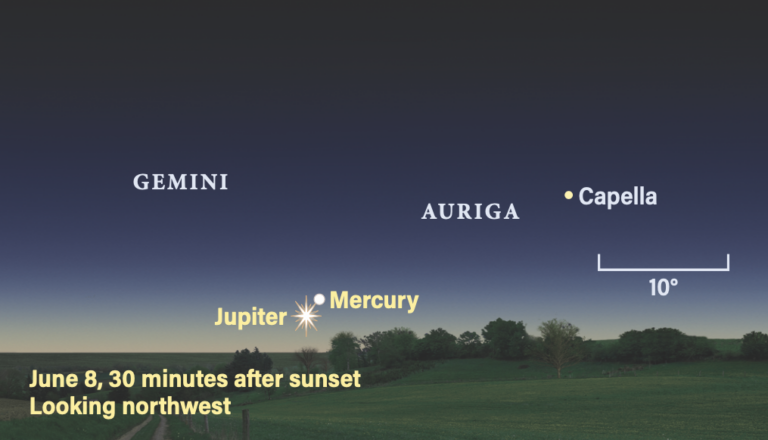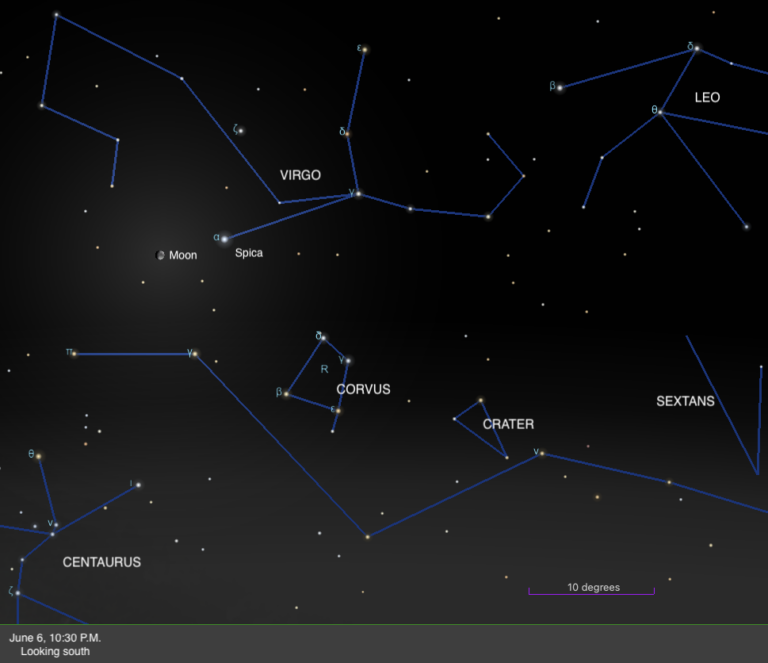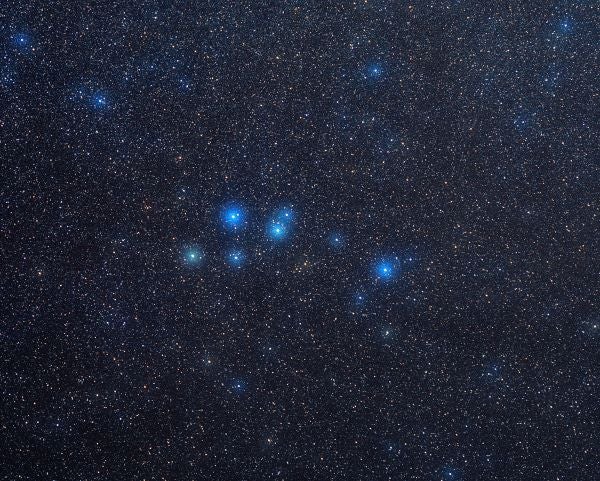Expand your observing with these tools from Astronomy magazine
- StarDome: Locate Mercury in your evening sky with our interactive star chart.
- Sign up for our free weekly e-mail newsletter.
Mercury’s close proximity to the Sun makes the planet difficult to spot. This is because our star’s glare washes out the point of light marking the innermost planet. In addition, Mercury never gets far enough from the Sun to appear high in a totally dark sky. But in mid-March at dusk, look about 19° east of the Sun to find this elusive planet. (The width of your fist held at arm’s length equals approximately 10°.) March 22 marks the best time in 2011 to see Mercury in the evening. On that day, it reaches greatest eastern elongation, meaning the innermost planet attains its greatest angle away from the Sun as seen from Earth.On March 16, Mercury shines at magnitude –1.0 and lies just 2° north of Jupiter. The king of planets is about 2.5 times as bright as Mercury, shining at –2.1. Use Jupiter as a guide to locate the innermost planet.According to Astronomy magazine Senior Editor Richard Talcott, “Mercury then fades quickly, to magnitude –0.3 by March 22nd. By that time, Jupiter has sunk deep into the twilight glow and Mercury will be the most prominent object in this region.” Through a telescope, the innermost planet’s disk will appear 7″ across and just under half-lit.While you’re observing Mercury, NASA’s MESSENGER probe is investigating its surface features. The mission will enter orbit around the planet March 17/18, after a 7-year journey. Expect to see many detailed images and new information about the innermost planet from this mission in future issues of Astronomy.
Fast facts about Mercury
- Mercury orbits the Sun at an average distance of 36 million miles (58 million kilometers), but covers a broad range from 29 million miles to 44 million miles (47 million km to 71 million km).
- Mercury takes just 88 days to complete one orbit of the Sun.
- Mercury takes 59 days to rotate once on its axis.
- With a diameter of 3,032 miles (4,880 km, or 38 percent of Earth’s), Mercury is the smallest planet in the solar system.
- Humans got their first close-up look at Mercury in March 1974 when NASA’s Mariner 10 spacecraft flew by and revealed a heavily cratered surface.
- NASA’s MESSENGER spacecraft has already flown by Mercury three times while altering its trajectory to enter an orbit around the planet.









